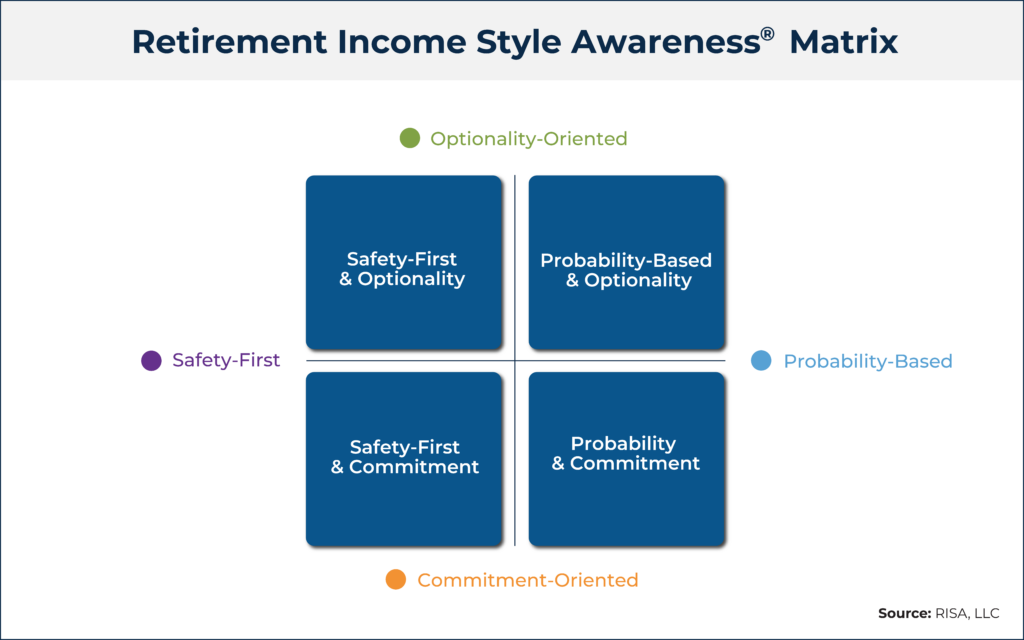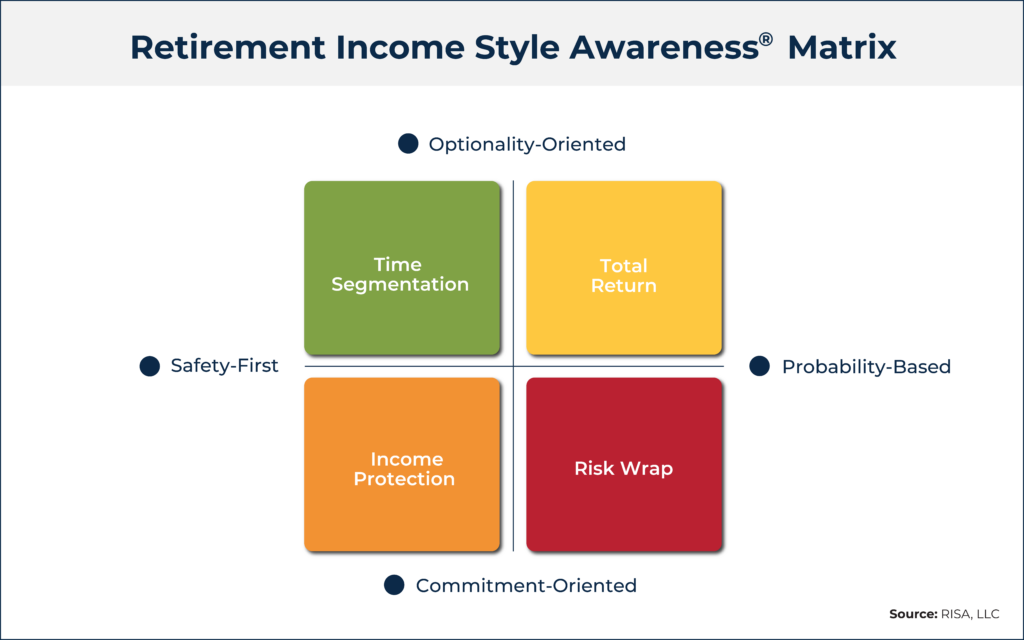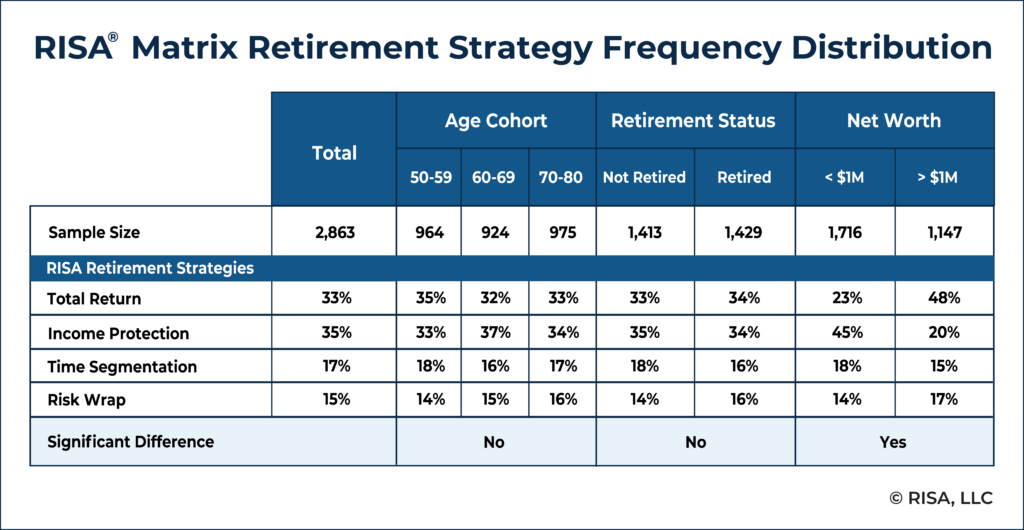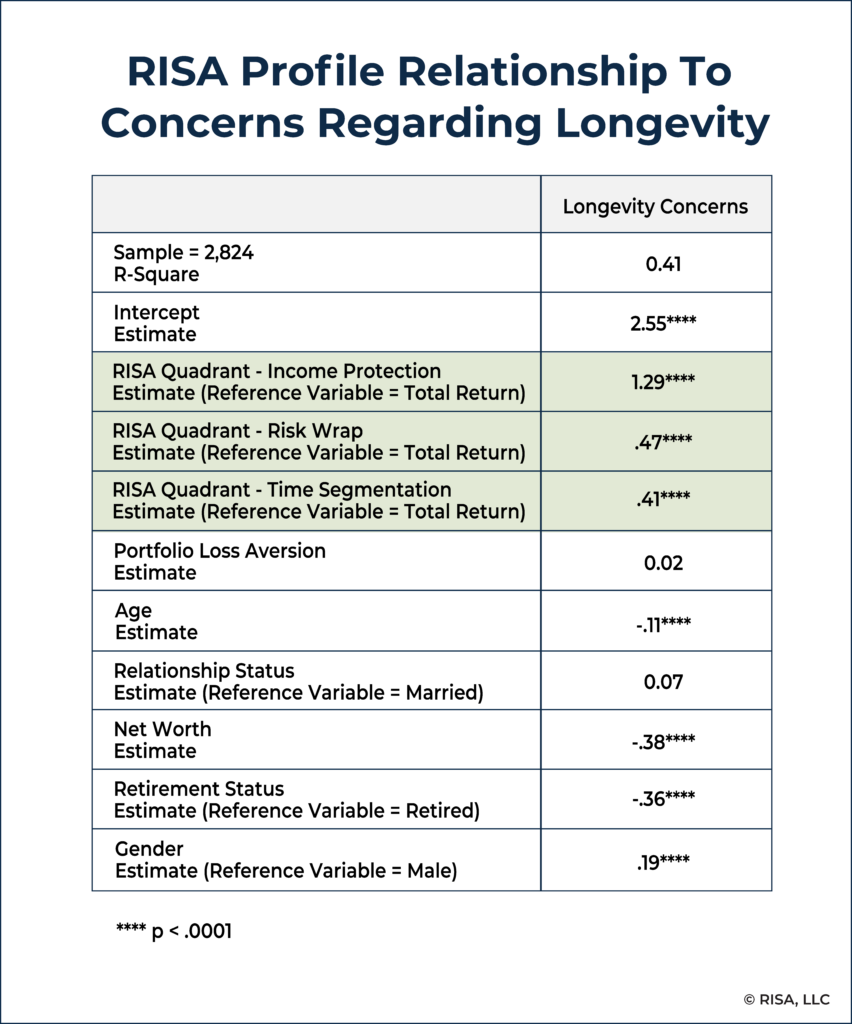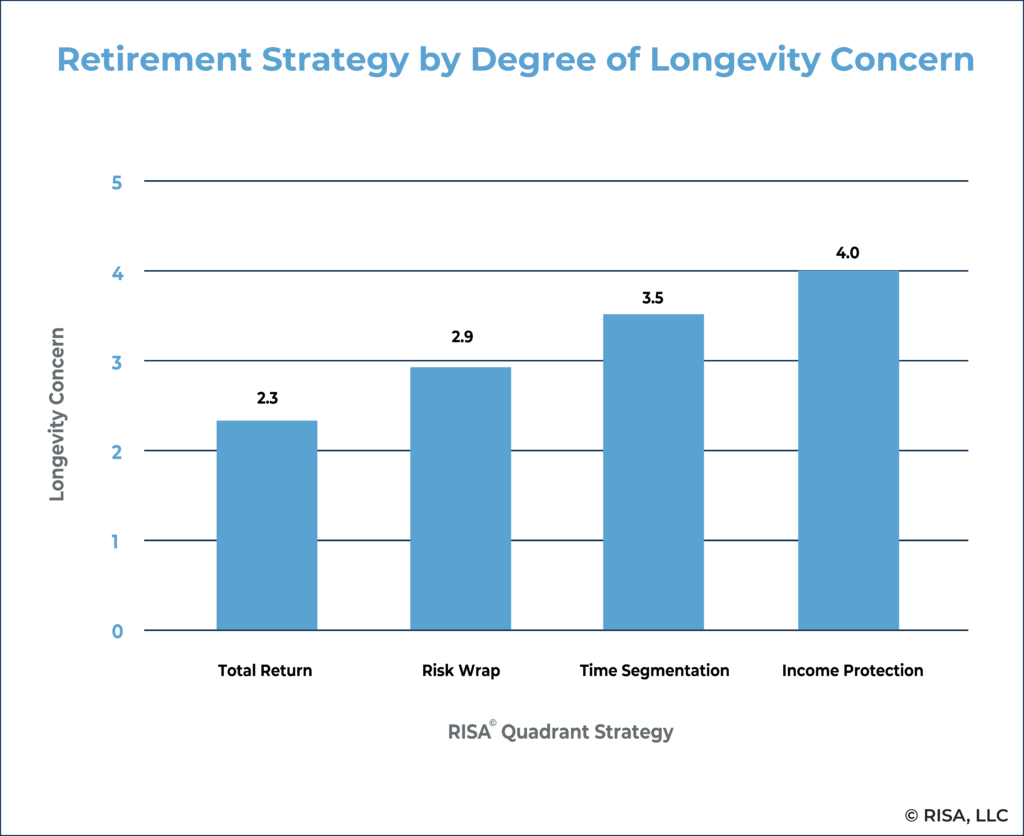Executive Summary
As average life expectancy has increased over time, so too has the importance for retirees to ensure that they have sufficient income to cover their needs throughout what could be a 30-year (or longer) retirement. While some advisors may rely on a single ‘favorite’ income strategy to recommend to clients, recognizing that retirees actually have a range of preferences on how to source their retirement income can help advisors better develop sensible strategies that clients may be more inclined to follow. And the starting point for understanding a client’s income preferences to help them choose the right retirement income strategy is to identify the client’s retirement income style.
In this guest post, Retirement Researcher CEO Alejandro Murguía and Founder Wade Pfau share their recent research examining different retirement income styles that can be determined by assessing an individual’s preferences for growing and using their retirement assets. Their study identifies the two strongest constructs that help to determine a client’s income preference style, consisting of Probability (depending on market returns) versus Safety (sources of income less reliant on market returns), and Optionality (having flexibility to respond to economic developments or changing personal situation) versus Commitment (being dedicated to one retirement income solution). Together, these constructs were used to create a framework that can be used to identify an individual’s Retirement Income Style Awareness (RISA) profile.
For advisors, the RISA framework can be used to determine a prospect’s or client’s preferences, which can then help them design an appropriate and practical retirement income strategy. For example, an individual who expresses a preference for Probability and Optionality would likely appreciate the potential upside from strong market returns and the option to change course as necessary that are offered by a Total Return income strategy. Those who prefer Safety and Commitment may align better with an Income Protection approach, which would involve building a lifetime income floor with simple income annuities. And for those favoring Probability and Commitment, a Risk Wrap strategy (i.e., building a lifetime income floor with deferred annuities offering lifetime withdrawal benefits) could be more appropriate. Finally, those with preferences rooted in Safety and Optionality would likely appreciate a Time Segmentation strategy (e.g., bucketing strategies that use less volatile assets for shorter-term expenses, and more volatile assets offering higher growth potential for future expenses).
Ultimately, the key point is that by having a structured process around assessing retirement income preferences (whether by using a standardized RISA Matrix assessment or informally assessing where a prospect or client will be on the Matrix), an advisor can begin to develop a retirement income strategy that will most likely appeal to a particular prospect or client. By doing so, advisors can not only add value to current clients by ensuring that the client’s retirement income strategy matches their preferences, but can also attract new clients by offering a more personalized approach to generating retirement income!
Life is not optimized on a spreadsheet but rather by pursuing personal aspirations. As individuals prepare to accumulate assets, their best investment decision will typically be how they choose to tap into their own human capital and earn a living. Basing this decision on one’s personal preferences can improve the chances not only for professional success but also for personal fulfillment. And selecting a retirement income strategy follows in a similar vein. Each person’s unique set of preferences can help them distinguish the best way for them to source their retirement income.
While there are countless ways to approach retirement planning, four broad strategies include total return (spending systematically from a diversified investment portfolio focused on total returns), income protection (building a lifetime income floor with simple income annuities), risk wrap (building a lifetime income floor with deferred annuities offering lifetime withdrawal benefits wrapped around a risk-based portfolio), and time segmentation (i.e., bucketing strategies that use less volatile assets for shorter-term expenses and more volatility assets offering higher growth potential for future expenses).
Each of these credible approaches emphasizes an individual’s distinct personal retirement income preferences. For financial advisors, the starting point to help clients who choose to pursue any retirement strategy begins with first identifying the client’s retirement income style.
Two Style Factors To Determine Client Retirement Income Preferences
Determining the ‘best’ strategy for retirement income is a topic that has been long debated by both financial advisors and consumers themselves, who appear to show strong preferences towards one stylistic approach over another. While the hope is that consumers are able to self-select advisors who can implement the preferred strategies for them, consumers may not always be aware of the available choices and may stumble upon and choose a strategy based on the first person they like and listen to.
To investigate whether there are distinct retirement income style factors, we conducted an initial investigation across our Retirement Researcher readership. After a review of the retirement literature and feedback from our community, we crafted questions for our 7 hypothesized retirement income factors. We then administered the question set to our readership and analyzed if these potential factors presented as distinct constructs. Exploratory Factor Analysis indicated that 6 factors were distinct retirement income styles. From the six styles, we identified the two strongest constructs. They were Probability-Based versus Safety-First, and Optionality versus Commitment Orientation. Subsequently, we replicated these results in a broad research study with a nationally representative sample.
We refer to the two main constructs of this research as our Retirement Income Style Awareness (RISA) profile. They constitute a client’s preferences for how they desire to source retirement income.
Probability-Based Vs Safety-First (PS)
Probability-Based retirement income sources are dependent on the potential for market growth to provide a continuous and sustainable retirement income stream. These include traditional diversified investment portfolios and other assets that have the expectation of growth. They are predicated on the idea that while market growth is not ‘guaranteed’ (at all, or over any particular time frame), markets have historically grown over time (and the probabilities for cumulative growth tend to rise as the time horizon increases), and thus are dubbed a ‘probability-based’ approach to retirement income. Simply put, while market returns are not guaranteed, some retirees are comfortable taking the probabilistic bet.
On the other hand, Safety-First retirement income sources incorporate contractual obligations to better secure their safety. The income provided by these sources is less exposed to market swings. A Safety-First approach may include protected sources of income such as defined-benefit pensions, annuities with lifetime income protections, or government bonds held to maturity. Though no strategy is completely safe (i.e., even insurance companies have some probability of failing, as measured by their insurance company ratings), the inclusion of contractual protections implies a relative degree of safety compared to the unknown market outcomes of probability-based income sources. Those who choose a Safety-First approach are expressing a willingness to give up the upside potential, at least in cases when the spending goals exceed payout rates from protected sources, of probability-based income sources for the relative assuredness and perceived safety of a contractual guarantee.
Optionality Vs Commitment (OC)
Optionality reflects a preference for keeping one’s options open and a desire to maintain flexibility to respond to economic developments or changing personal situations. This preference aligns with retirement solutions that do not have pre-determined holding periods and are easily adjusted.
Conversely, Commitment reflects a preference for committing to one solution. The retiree does not feel the need to ‘keep their options open’, and is willing to both affirmatively select a particular retirement income solution, and in particular one that itself may require an irrevocable commitment (e.g., lifetime annuitization or similar contractually-binding guarantees). There can also be satisfaction from planning in advance and not leaving difficult decisions for later when a retiree’s ability to make decisions may be hampered by stress or cognitive decline.
While both of these constructs (i.e., the style factors represented by PS and OC) are intuitive, they are also distinct quantifiable factors that can be measured reliably and are indicative of financial planning outcomes. A fuller investigation of this statistical work can be found in our 2021 study published in the Retirement Management Journal.

Nerd Note:
Interestingly, we were able to implement a natural experiment during market extremes that supported that these factors can indeed be reliably measured. We provided the RISA questionnaire to our sample in March 2020 during the significant market decline due to the COVID pandemic, and re-administered RISA assessments during Fall 2020 to the same sample after markets had recovered. While perceptions of risk may have shifted through the market volatility, individual participants’ answers regarding their retirement income style preferences during these two time periods were statistically consistent. Inter-item reliability among these factors was supported in our initial investigation and with the national sample in our ALI investigation.
How Retirement Income Style Preferences Can Identify Suitable Retirement Solutions
To design a convenient framework that helps advisors determine a suitable retirement strategy for clients based on personal preferences, we combined the Probability-Based versus Safety-First (PS) and Optionality versus Commitment (OC) factors to create a set of questions that make up the RISA Matrix. The Matrix examines how scores calculated for each RISA factor can be utilized by translating an individual’s preferences and style markers into appropriate and practical retirement income approaches.
More specifically, depending on where the responses land on the two primary PS and OC dimensions, the RISA Matrix lays out four quadrants to delineate an individualized retirement income profile for how they wish to source spending for budgetary items that they deem as essential to a successful retirement.
The graphic below illustrates how we compiled the RISA Matrix. By aligning the PS scale horizontally and the OC scale vertically, we can separate and identify four distinct retirement income strategy quadrants.
Probability-Based & Optionality Factors: Total Return Strategy
Landing on the top-right quadrant of the RISA Matrix indicates an individual’s preferences lean toward a strategy involving Probability-Based income sources and Optionality, which means they will likely prefer to draw income from a diversified investment portfolio rather than using less flexible contractual sources like fixed-income annuities to fund their retirement expenses. Accordingly, this quadrant identifies strongly with the Total Return approach, which both embraces the probability-based upside growth potential of markets, and remains liquid and flexible with the optionality to change strategies in the future.
Portfolio growth would be expected to support a sustainable spending rate. In addition, the retiree wouldn’t mind the inherent variability of drawing income from investments that will fluctuate in value, and would be willing to be flexible around an unknown income stream.
Safety-First & Commitment Factors: Income Protection Strategy
The lower-left hand quadrant reflects individuals with a Safety-First and Commitment orientation. This reflects the Income Protection approach, which calls for immediate and deferred annuitization to support greater downside spending protection by relying on contractually guaranteed lifetime income. The individual is willing to make a full commitment to a strategy that provides the utmost safety protection for their retirement income.
In practice, this quadrant may also include fixed-index annuities with living benefits. These characteristics align with retirement income strategies that provide a contractual lifetime income floor for essential or core retirement expenses and then use a diversified investment portfolio for discretionary expenses. Murguia & Pfau (2021) show how profile placement in this quadrant was highly predictive of individuals utilizing income annuities as part of their retirement plan.
Probability-Based & Commitment Factors: Risk Wrap Strategy
The remaining two quadrants reflect more hybrid approaches. Shifting to the lower-right quadrant of the RISA Matrix, we find individuals whose RISA Profile shows both a Probability-Based and Commitment orientation. While these people are likely to maintain a Probability-Based outlook with a desire for market participation, they also have a greater desire to commit to a solution that provides an underlying safety net for a structured income stream.
We characterize these preferences as reflecting a Risk Wrap strategy, which provides a blend of investment growth potential with guaranteed lifetime income benefits, generally through a variable annuity, a registered index-linked annuity, or a fixed index annuity with some type of guaranteed withdrawal or annuitization rider attached. Such tools can be designed to offer upside growth potential, coupled with secured lifetime spending if markets perform poorly.
The associated market exposure satisfies the Probability-Based dimension. Purchasing a more structured and secured retirement-income guardrail through the lifetime income benefit addresses the Commitment dimension that is present in this quadrant.
Safety-First & Optionality Factors: Time Segmentation Strategy
Finally, the upper left quadrant reflects another hybrid case. Those who fall into this quadrant prefer both Safety-First and Optionality. They like investments that may have contractual protections, but don't like sacrificing flexibility with a contractual commitment for how the dollars themselves are allocated into the strategy itself.
For example, one strategy is an investment-based Time Segmentation approach where individuals divide their money into different categories, such as a short-term bucket (earmarking assets for spending immediately), an intermediate-term bucket (for spending that is soon but not immediate), and a long-term bucket (for spending that won’t come until much later).
In such cases, contractually protected instruments (e.g., cash equivalents or government-issued securities) are often effective for shorter to intermediate income needs, bond ladders are often a good solution for intermediate-term buckets as well, and a diversified investment portfolio fulfills the longer-term expense needs. Over time, the longer-term portfolio can gradually replenish the short-term buckets as these are used to cover retirement expenses.
Some people may also lump Time Segmentation together with the idea of holding additional cash reserves outside the investment portfolio to manage market volatility or to fund unexpected expenses. These strategies address the need for asset safety by including short-term contractual protections while maintaining a high degree of optionality for other investment assets.
Using The RISA Framework To Choose Retirement Strategies By Personal Preference
With the RISA framework in place, advisors have a method to systematically identify how a client prefers to source retirement income. This knowledge leads to appropriate client solutions because the solutions will appeal to the client's preferences for how they want to optimize their own retirement income strategy in the first place.
Notably, given that the RISA framework identifies preferences that any individual can have, it applies to advisors as well as their clients. Which helps to explain why many advisors have a strong view that there is one particular strategy that is ‘best’ and most viable, and then try to implement that approach (which they view as best based on their own preferences) with all their clients.
To the extent that advisors may only choose to work with prospects that also identify with their preferred strategy, and/or have prospects who self-selected to work with the advisor because the advisor’s preference aligns with their own preference as a future client, the advisor and client’s preferences end out aligned. However, not assessing a clients’ retirement income style can potentially lead to a significant misalignment between client strategies and their actual preferences when such matching does not occur.
In other words, advisors themselves face two approaches that must be considered in light of the RISA framework: either to be very clear about their particular approach and take steps to ensure they only work with clients who are aligned to that approach, or to consciously be (more) flexible about the full range of retirement income approaches and have a methodology to determine which one is the best fit for a particular client’s preferences.
Our underlying assumption is that there are many credible ways to solve one’s retirement income puzzle, but the right starting point is the one that is most aligned with clients’ preferences (or the client won’t likely be comfortable sticking with the strategy, anyway!).
RISA Matrix Studies Support The Popularity Of Multiple Retirement Income Approaches
In a national investigation sponsored by the Alliance for Lifetime Income (ALI), we assessed our RISA factors across the United States with a stratified sample of 2,863 individuals delineated according to gender, age (50 – 80 years old), net worth, and retirement status. The table below provides a retirement strategy frequency distribution of the RISA Matrix, identifying how individuals prefer to source their retirement income needs for essential expenses.
Results indicate that approximately 35% subscribe to Income Protection, 33% to Total Return, 17% to Time Segmentation, and 15% to Risk Wrap. While results varied between certain factors like net worth, the general pattern remained.
Overall, our results indicate that the RISA Matrix measures a stable client variable. There were no statistically significant differences in retirement income preferences between pre- and post-retirement status. Similarly, there were no statistically significant differences in individual RISA Profile scores between the ages of 50 – 80 (we chose this age range because retirement strategies would be more relevant to them). In other words, results suggest that RISA Profiles do not change as one ages or retires.
Results do indicate statistical differences based on net worth, though. However, because RISA factors are stable with age, results suggest an endogeneity factor at play. For example, being more probability and optionality focused throughout one’s life may present more opportunities to increase net worth relative to those who are safety-first and commitment focused. Such that it’s not that those who are more affluent may prefer total return approaches, but that those who already had a preference for total return over income protection may be more likely to generate a higher net worth in the first place.
Coupled with the retest consistency from our initial investigation and the consistent findings across cohorts from the ALI investigation, one’s RISA Profile exhibits more as a trait than as a state. The RISA scores capture a set of stable preferences regarding how one prefers to source retirement income. This is important because, to develop a retirement plan that is consistent, we need to assess stable traits akin to introversion, as opposed to more transitory states like excitement.
Total Return Strategies Are Not Always The Most Suitable Approach For Clients
The consistency of the general RISA frequency distribution across all demographics suggests some interesting implications. The main observation is that the characteristics present within a Total Return approach resonate with roughly 33% of individuals readying themselves for a retirement income plan.
While 33% is a large nominal percentage amount, it seems that, in practice, a Total Return approach is overrepresented by investment professionals and media personalities, as it has become a default strategy for independent advisors under the increasingly popular AUM model. Yet, our results indicate that a majority (roughly 67%) of individuals are looking for strategies that have different degrees of contractual protections to fund their essential expenses throughout retirement. Even at higher net worth levels, where financial advisors tend to be more concentrated, that percentage with a preference for non-total-return strategies is still over 50%.
While a Total Return approach relies on a very credible strategy and may be appropriate for many individuals, it would be naive not to acknowledge that business model concerns (historically, AUM-centric advisors could not always get paid for non-portfolio-based retirement income strategies, especially under the RIA model) influence this strategy selection by many advisors. One can also make the case that with the popularity of pre-packaged model portfolios, a total-return approach is often sold, not bought. On the other hand, the rising availability of fee-based annuities and other income protection products in recent years may help to better integrate more retirement income solutions into the AUM model framework.
Because again, the key is that given the range of actual client preferences for retirement income, advisors need to be aware of individual retirement income styles to ensure that they understand what strategies are likely to resonate more with clients. Aligning a client’s income style with their retirement income strategy further ensures that clients will be more likely to consistently adhere to (and actually implement!) their strategy.
How The RISA Can Help Financial Planning Clients
In addition to identifying a client’s preferred retirement income styles and corresponding retirement strategies suitable for their preferences, the RISA Matrix can also be used for assessing the main concern people have for retirement – longevity. Longevity involves the risk of outliving one’s money, centering on financial independence and knowing that one can pay their basic expenses and not be a burden to others. Some common basic expenses include (but are not limited to) daily living expenses, housing, and general health care.
As discussed in the next section, not everyone is equally concerned about longevity. We might think of the air we breathe as an example of this, as though we all know that air is essential to life, we are not always immediately concerned about being able to obtain air. Differing concerns about longevity do correlate to different retirement styles, though.
Nonetheless, the longevity concern is especially pertinent in the retirement context, as it is largely absent from investment considerations while accumulating assets. While active financial planning during accumulation years to accommodate life milestones is essential, the main determinant of a successful investment experience for retirement accounts while working relies on the asset allocation decision and maintaining investment discipline to seek risk-adjusted returns that grow wealth without an ongoing distribution need. It’s only when the ability to save and contribute stops, and the retiree is faced with the prospect that “this is all there is, and it has to last”, that longevity concerns may emerge and begin to more directly impact (retirement) investment decisions.
RISA Assessments Can Estimate A Client’s Degree Of Longevity Concerns
Results from our ALI investigation presented in the data table below suggest that one’s RISA Profile can predict the strategy they will prefer for addressing their degree of longevity concern via the different available retirement strategies within the RISA Matrix. Furthermore, RISA quadrant placement is significantly related to varying degrees of longevity concerns, even when controlling for loss aversion (our proxy for traditional Risk Tolerance Questionnaires (RTQs)), age, marital status, net worth (our proxy for risk capacity), retirement status, and gender.
Of note, net worth was also significantly related to longevity concerns. Hence, while the RISA Matrix may identify the starting point consideration for a retirement plan, a financial plan is still needed to assess the economic viability and risk capacity of that strategy since planning naturally incorporates net worth in the analysis.
Importantly, the results presented in Graphic 4 also support the credibility and viability of maintaining four distinct retirement income strategies to choose from because they each address a different degree of longevity concerns. Those with the income protection style show the most concern for longevity, followed by time segmentation, risk wrap, and then total returns.
Why Risk Tolerance Questionnaires Fall Short In Identifying The Right Retirement Strategy
Furthermore, our results indicated that simply providing an RTQ as a client transitions into retirement is ineffective in strategizing how to address their longevity concerns, as loss aversion, the foundational component of RTQs, is not significantly related to one’s level of longevity concerns. Hence, while an RTQ may be a viable tool to develop an asset allocation, it falls short of the mark as a first step in helping to determine an appropriate retirement strategy based on preferences for sourcing retirement income and the degree of longevity concern.
Using an RTQ to measure loss aversion as a client transitions into a retirement plan, when longevity concerns are the most significant risks the client will face, is akin to using a stethoscope for measuring their blood pressure. It is the wrong tool for the job. Our ALI investigation also found that loss aversion measured by RTQs is also not statistically related to other important retirement factors such as spending shock concerns for unexpected healthcare expenses.
Furthermore, the use of an RTQ in the first step of the retirement transition process ignores a client’s preferences because an RTQ implicitly assumes that the strategy of choice is total returns investing (as that’s what the industry requires an RTQ to determine the allocation for). Which is again problematic, as our results suggest only 33% of individuals prefer a total returns strategy, in turn suggesting that using an RTQ to assess individual preferences for the 67% of individuals who gravitate toward other retirement strategies (risk wrap, time segmentation, or income protection) would produce misaligned results. Asset allocation decisions follow after the decision on how to source income for essential retirement needs.
How To Incorporate The RISA Into The Financial Planning Process
While the RISA is a standardized assessment tool, an advisor can informally assess where a prospect or client will be on the RISA matrix by asking the questions below, which address the themes of retirement income style:
Probability-Based Versus Safety-First Themes:
- Is the client comfortable with relying on market returns for all of their retirement income success? (Probability-Based)
- Does the client feel the need for protected sources of retirement income because their investment portfolio may not perform as expected during their retirement? (Safety-First)
Optionality Versus Commitment Themes:
- Does the client prefer a flexible retirement income strategy over retirement income consistency? (Optionality)
- Does the client value strategies that remove the need to continually revisit their retirement income choices? (Commitment)
By having a structured process around assessing these themes, an advisor can begin to gather which of the 4 retirement income strategies defined by the RISA tool will most likely appeal to their prospects and clients. Conducting an assessment can be as simple as recreating the matrix on a notepad and plotting their answers to these themes based on the discussion that ensues. This becomes the first step in discussing the transition toward retirement income for existing clients as well as potential prospects.
For financial advisors, the RISA assessment can be used to help empower the client by alerting them to their inclinations around selecting a retirement strategy that will most likely resonate with them. This changes the current dynamic from one in which the advisor largely places their clients into one retirement strategy without true consideration for client preferences, to one in which the client provides a true sense of what they are looking for in a solution. This strategy reflects a more empathetic and professionally credible approach, leading with the client’s preferences to help curate a plan of action around that. This further maintains an advisor’s value proposition while enhancing the client-advisor relationship.
Practical Considerations Of Implementing The RISA Matrix
Using an approach that includes the RISA Matrix does raise two practical questions for financial advisors, specifically around alignment (or rather, misalignment, and how to correct it when it occurs).
The first question that arises: What if a current client is in a misaligned strategy with their RISA Profile?
Absent an immediate client need or concern, the natural process to assess a client’s RISA profile would be during a review meeting. If there is misalignment with a client’s strategy and RISA profile, the advisor should further explore the reasons. It may very well be that the client is unable to implement their preferred strategy because of economic limitations. If so, the advisor would do well to review the thinking behind their current strategy.
If a client is ambivalent about their current strategy, this may be a welcome opportunity to transition into one that better fits their profile. And for advisors who may feel hesitant to rock the boat, we suggest a more evolutionary view of their practice. If there is an alternative approach for clients that may also be a better fit, then it is within the advisor’s purview to discuss it with them, and could even become incorporated more broadly into the advisor’s practice in the future if other clients show a similar preference.
This is the natural trajectory of a best practice. Retirement income planning is still very much a nascent and evolving field. And in much the same way that many advisors over the last 20 years have shifted from an active to a passive investing approach, promoting the RISA assessment as a review of a client’s current plan to make sure it is aligned with these newly developed advances in the field is a viable explanation that should be well-received by clients.
The second question: What if an advisor encounters a prospect or a current client that is transitioning to retirement who doesn’t subscribe to the retirement strategy that the advisor wants to promote?
While advisors bring expertise that merits strong consideration in implementing a retirement plan, a client and prospect’s RISA Profile can be a good starting point for the analysis. A sole focus on one retirement strategy, while actively ignoring the others (even and especially when their RISA Profile suggests they may be more appropriate for the client), contradicts what it means to be a fiduciary: keeping the client’s best interest in mind.
We have shown a varied dispersion across the population of retirees regarding their retirement income preferences. This needs to be taken into consideration when developing a retirement plan, which means advisors either need to be prepared to expand the strategies they offer, or more readily turn away clients who don’t fit their own strategy of choice (and refer that prospect out to another advisor whose retirement income strategy approach is a better fit for the client’s own preferences).
Regulatory Implications Of RISA To Document Appropriateness Of Recommendations
On December 18, 2020, the Department of Labor (DOL) adopted Prohibited Transaction Exemption (PTE) 2020-02, a new PTE under the Employee Retirement Income Security Act (ERISA) and the Internal Revenue Code of 1986 (the “Code”) for investment advice fiduciaries with respect to employee benefit plans and individual retirement accounts (IRAs). Which means that under PTE 2020-02, insurance companies and agents are both fiduciaries and can accordingly also benefit from using the RISA assessment to serve their clients and document the appropriateness of their recommendations, especially in an environment where the advisor must show that their recommendation was in the clients’ own best interests despite the potential for conflicted compensation.
Similarly, RISA also provides a potential framework for broker-dealers subject to Regulation Best Interest to have a more robust framework by which they can document an appropriate client match to different tools, including investments, annuities, structured products, or other product types, through an empirically validated retirement income framework.
The RISA framework for understandings an investor’s preferred retirement income sourcing method provides the backbone of a prudent process for retirement income recommendations. It goes beyond the traditional RTQs because it addresses the main risks in retirement, which RTQs do not, and identifies an investor’s preference for one of the four main retirement income strategies.
Documentable, repeatable processes are becoming increasingly critical to protect the perceived integrity of all forms of financial advice, as well as to minimize the legal liability associated with its provision. The RISA assessment can be helpful in satisfying regulatory requirements for a variety of business models.
Furthermore, the RISA framework represents an advancement in blending psychology and financial planning. Combining elements of personality assessment with the economic trade-offs present in financial planning provides a practical and easy-to-use empirical framework to identify effective retirement income strategies that align with a client’s interests.
Financial advisors can serve a broader range of potential clients by approaching retirement income tools and strategies with an agnostic view and recognizing the need to fit different strategies based on the preferences of the recipient. While one should conduct a financial plan to assess the economic viability of any approach, understanding an individual’s RISA Profile provides a validated starting point for analysis. Once an individual’s RISA Profile is identified, the individual can quickly and manageably have a range of strategies presented to them that will “feel right.” The RISA factors provide an effective framework for determining individual retirement income styles and retirement solutions.
Advisors seeking to learn more about how we use the RISA strategy to approach retirement income planning are welcome to join our Advisor Challenge starting on April 25.



